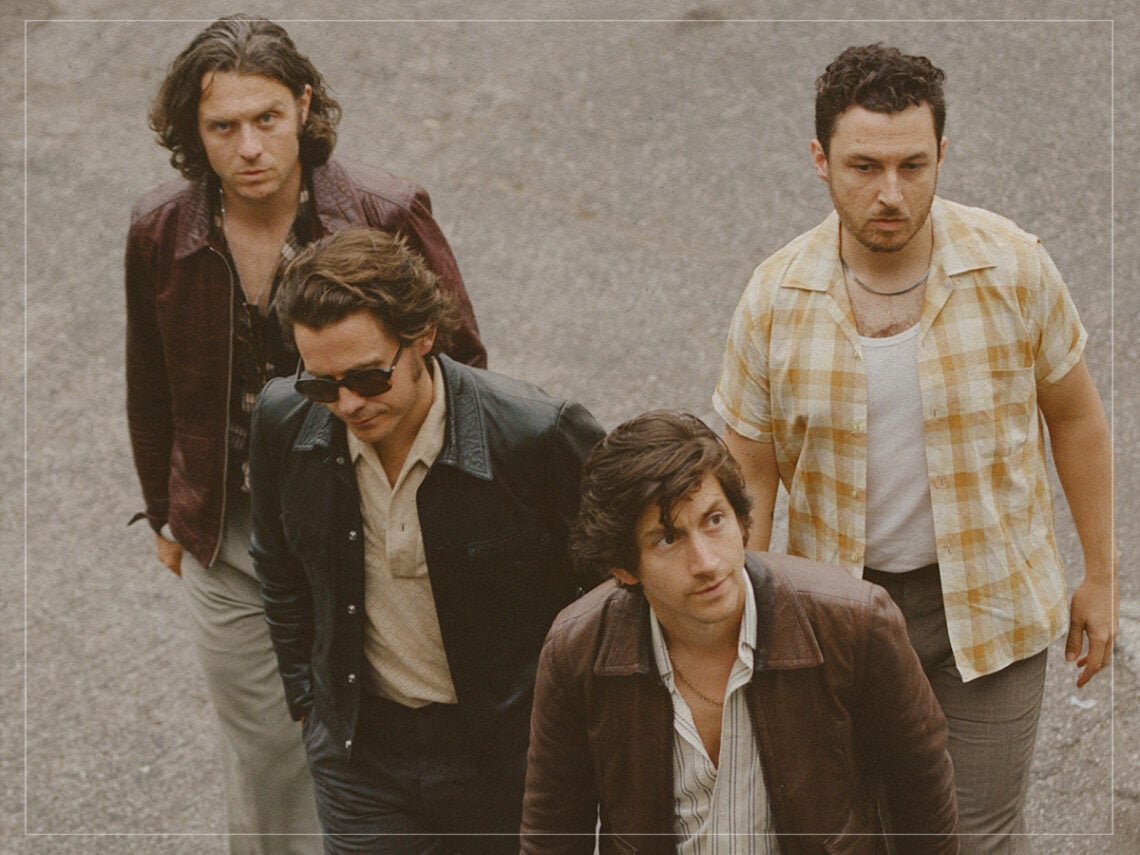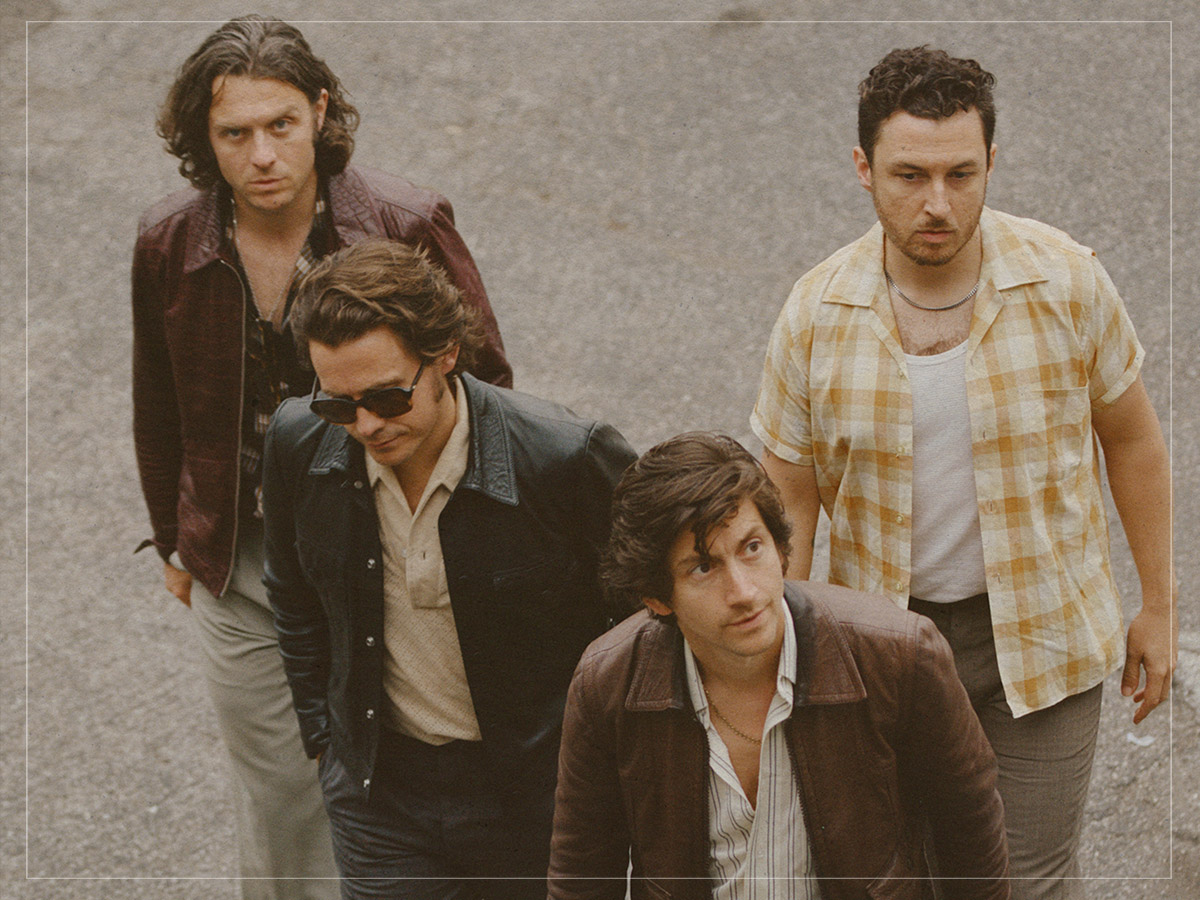
(Credits: Far Out / Zackery Michael / Domino Records)
Thu 12 June 2025 10:00, UK
It’s something of a miracle we still have Arctic Monkeys. Whatever People Say I Am, That’s What I’m Not was the kind of success story that most thought just couldn’t happen any more. Even in those heady days, people were convinced that guitar music was past it and that no other band would capture the nation’s imagination the way previous bands had. Then ‘I Bet You Look Good on the Dancefloor’ dropped and all bets were off.
They weren’t just the biggest band in the country, but the most exciting, too. Absolutely nothing seemed to slow their momentum; yet, those from a few generations back had seen this happen before. No matter their advancing motion at the time, there was always a way to bollocks it up, such as had happened with Oasis.
While their momentum carried through a successful second album, the brother-duo’s Be Here Now catastrophe ended their relevancy to all but the most casual music fans. However, it was the generation before them that had seen the most worrying trajectory. A bunch of northern lads with a whip-smart, genuinely cool take on guitar music, who became the biggest band in the country off the strength of an unimpeachable debut album. AM could easily be The Stone Roses all over again, if they weren’t careful.
Fortunately, the Arctics have all but proven themselves a far better band than both at this point, and the signs were all there when Favourite Worst Nightmare was released. The band evolved everything about their sound while keeping everything that people had loved the first time around. Then Humbug dropped, and everything evolved again, in a much more bumpy way than the first time around.
Everything sleek, tight and ferocious about the band had suddenly become longer, woollier and hazier. The riffs were no longer rocket-fuelled bursts of searing guitar energy but anvil-heavy, low-slung and deliciously dark. Alex Turner’s lyricism became more poetic and, in the minds of many, less relatable. Songs were drawn out rather than packed in. People were absolutely baffled, but those who were, hadn’t been paying attention.
Who inspired this evolution of Arctic Monkeys?
You see, peppered throughout the early Arctic Monkeys interviews is the mention of one band that makes all this make sense. Granted, the group had all the charisma of a boiled potato back then, making their interviews easy to ignore. However, those who didn’t notice the three bands that make up the holy trinity of influences for AM. The first two are fairly obvious, which are The Strokes and The Streets. If anything, those two bands make up the elevator pitch of Whatever People Say I Am….
However, the third is Queens of the Stone Age, who Turner and Co were all die-hard fans of as teenagers. While their influence is all over Favourite Worst Nightmare and its noir, supercharged guitar heroics, Humbug is a love letter to the stoner rock legends with emphasis on the “stoner”. This was absolutely the band’s intention as well, since they picked Queens frontman Josh Homme to produce the record alongside their frequent collaborator James Ford.
His presence in the studio was a hands-on one, too, that the band took very, very seriously. Turner gives an idea of just how reverent the band were to ginger Elvis in an interview with Spin. When asked what Turner learned from Homme, he responded, “There are solos on a lot of the tunes, which is something we’ve always been a little scared of. The solos we have had were quite punky and short and a bit nasty. Having Josh there, and also Alain Johannes, who’s a fucking unbelievable guitarist, was dead encouraging for Jamie [Cook, guitarist] and I. We’d say, ‘Oh, we’re not very good at all that’. And then they’d send us out on the porch with a little amp to work it out.”
This Guitar Hero boot camp opened up the band’s creative vision even further, as evidenced by the band’s following two albums.
Both Suck It And See and AM benefit from everything Turner and Cook learned from the Queens mainman. Especially the latter since it’s essentially Humbug with a slick, 1990s G-funk sheen. Proof that sometimes, your heroes won’t just meet your expectations if you meet them, but exceed them entirely. Much like the Monkeys themselves did with their masterful first four albums.
Related Topics
The Far Out Music Newsletter
All the latest music news from the independant voice of culture.
Straight to your inbox.
